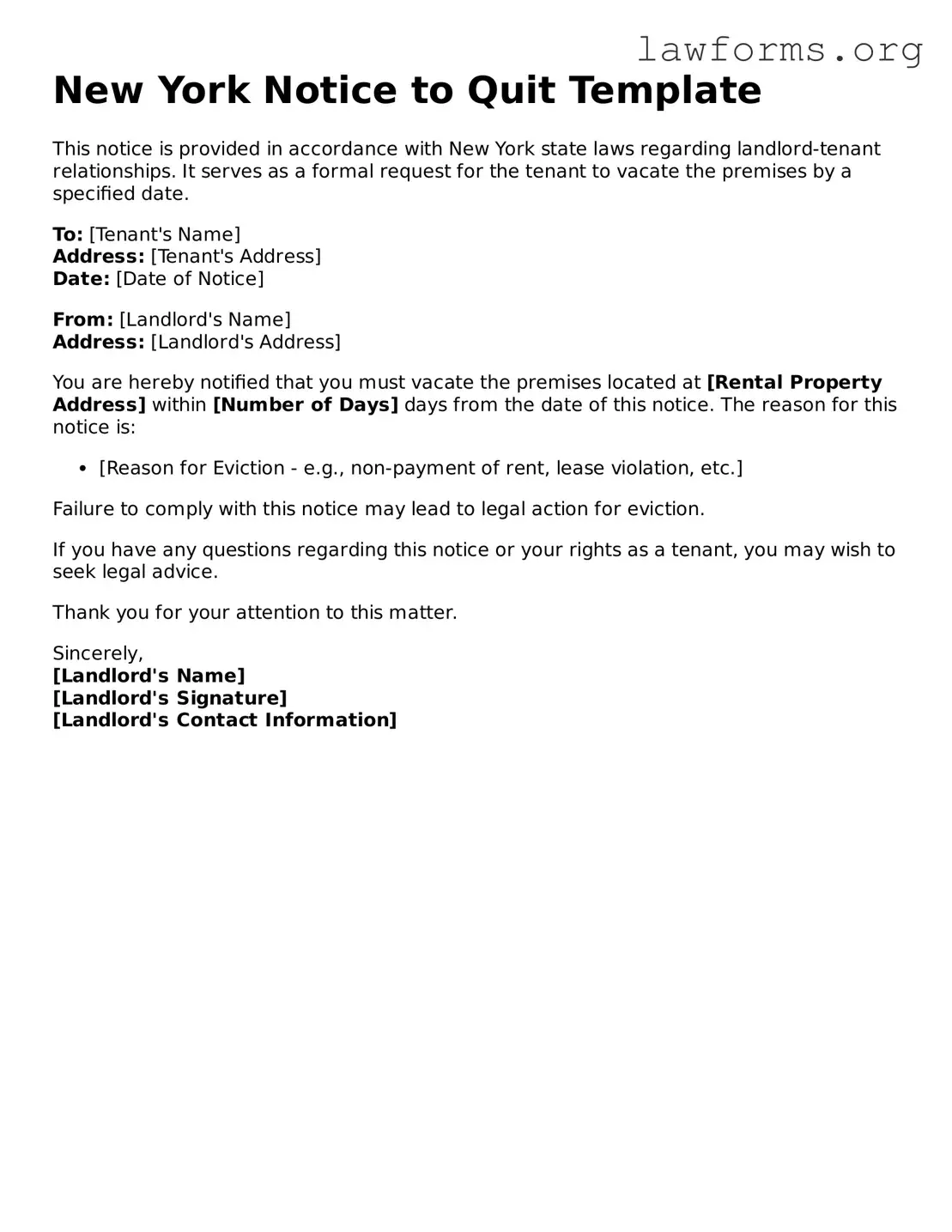Attorney-Approved Notice to Quit Template for the State of New York
The New York Notice to Quit form is a legal document that a landlord uses to inform a tenant that they must vacate the rental property. This notice typically outlines the reason for eviction and provides a specific timeframe for the tenant to leave. Understanding this form is crucial for both landlords and tenants, so be sure to fill it out correctly by clicking the button below.
Customize Document Online
